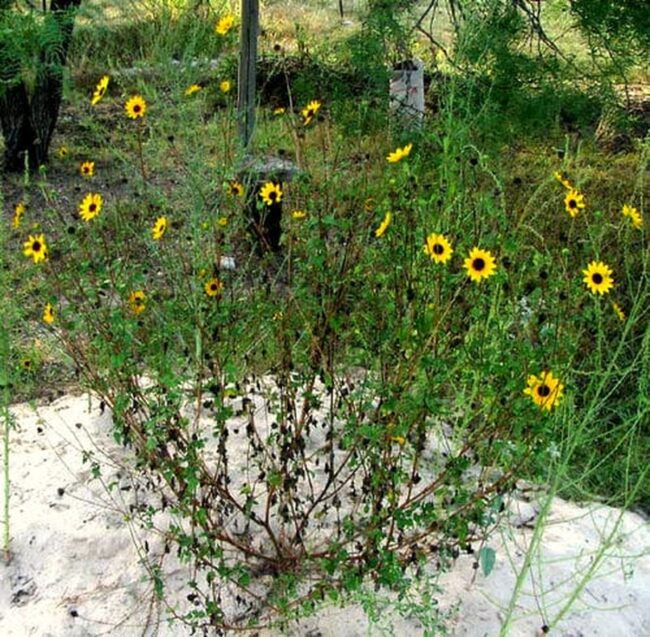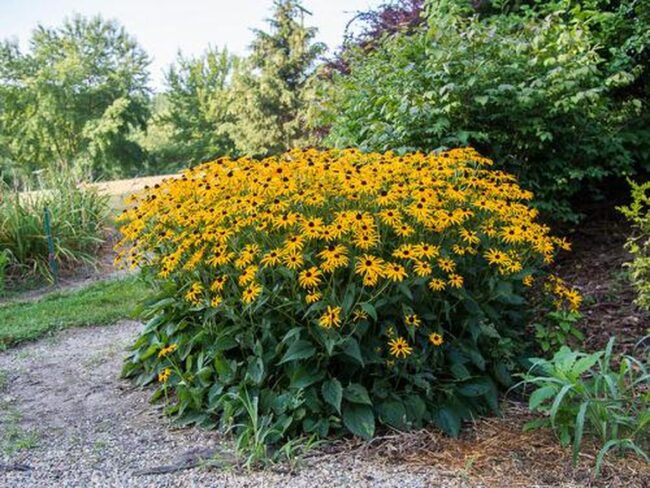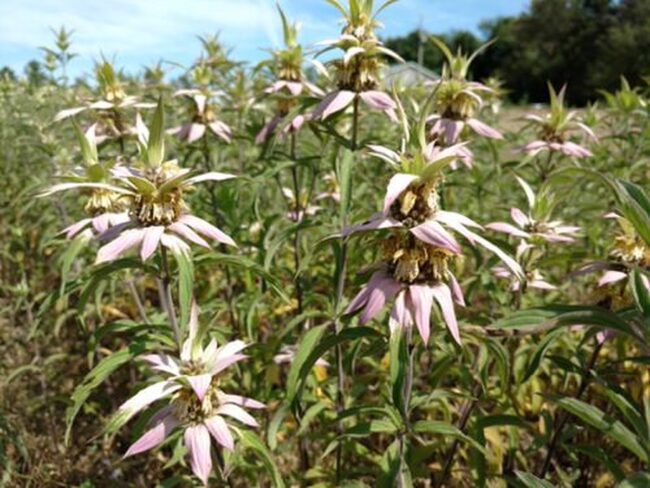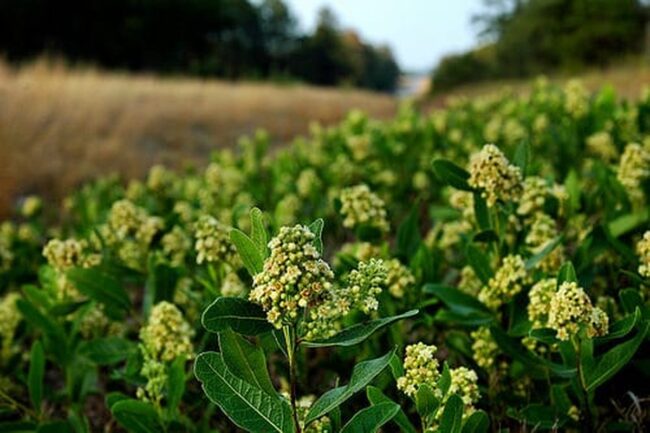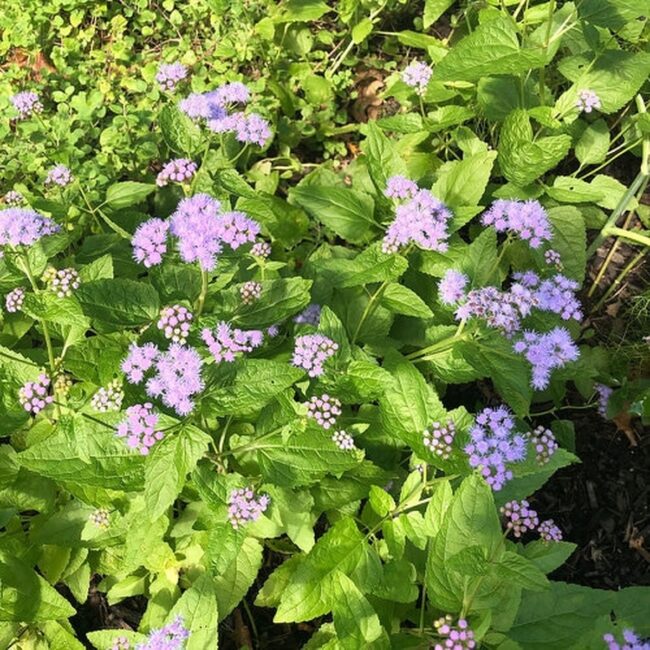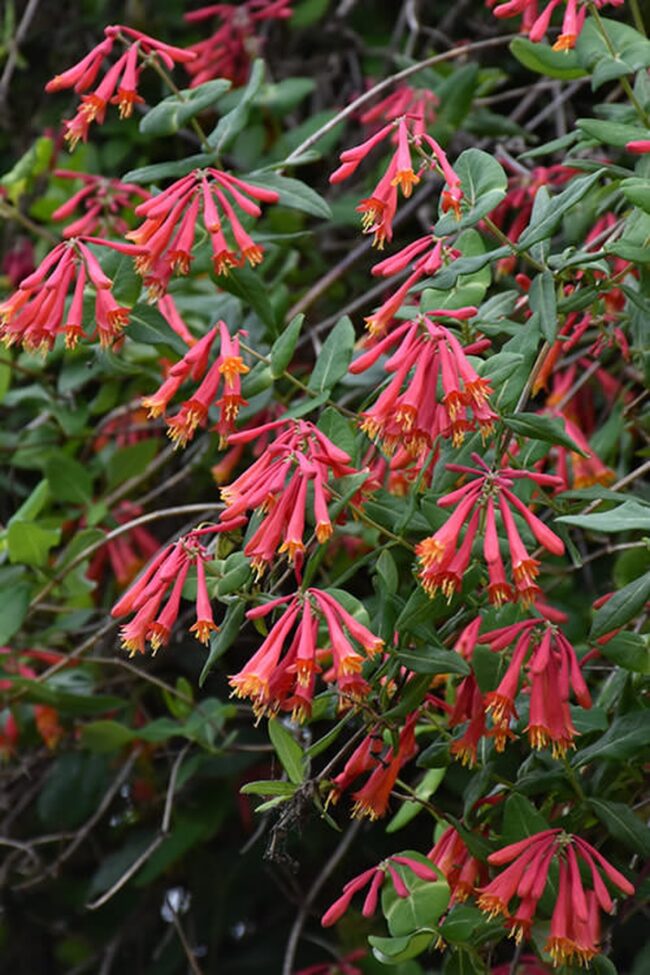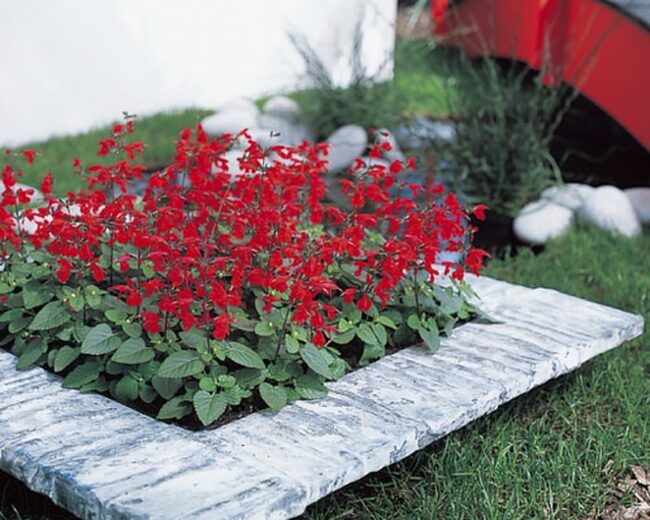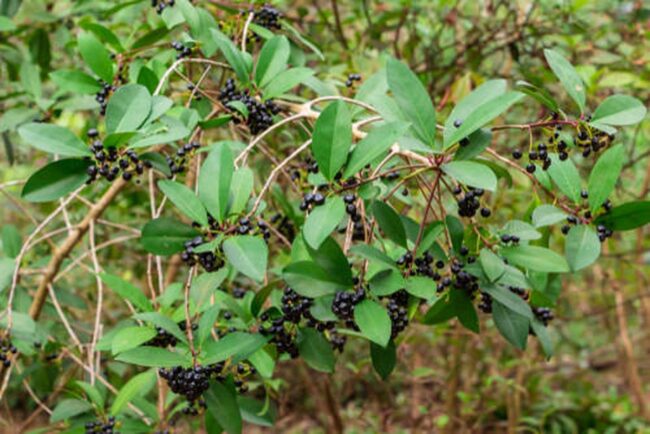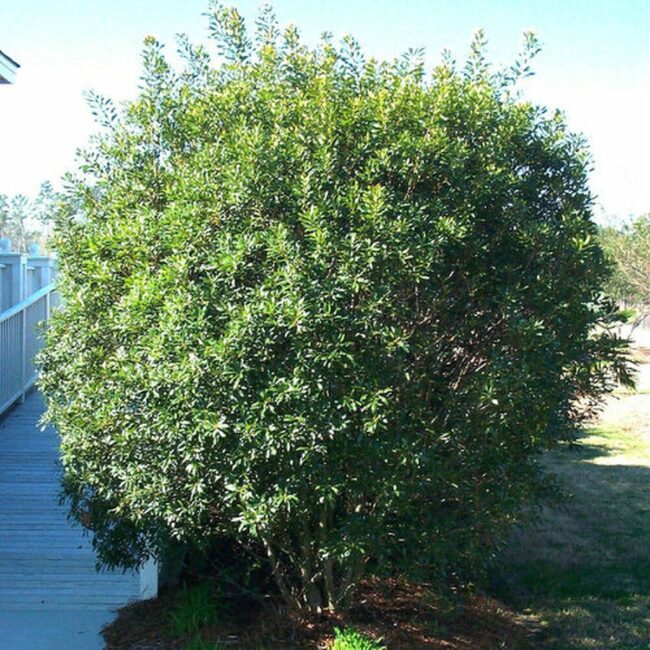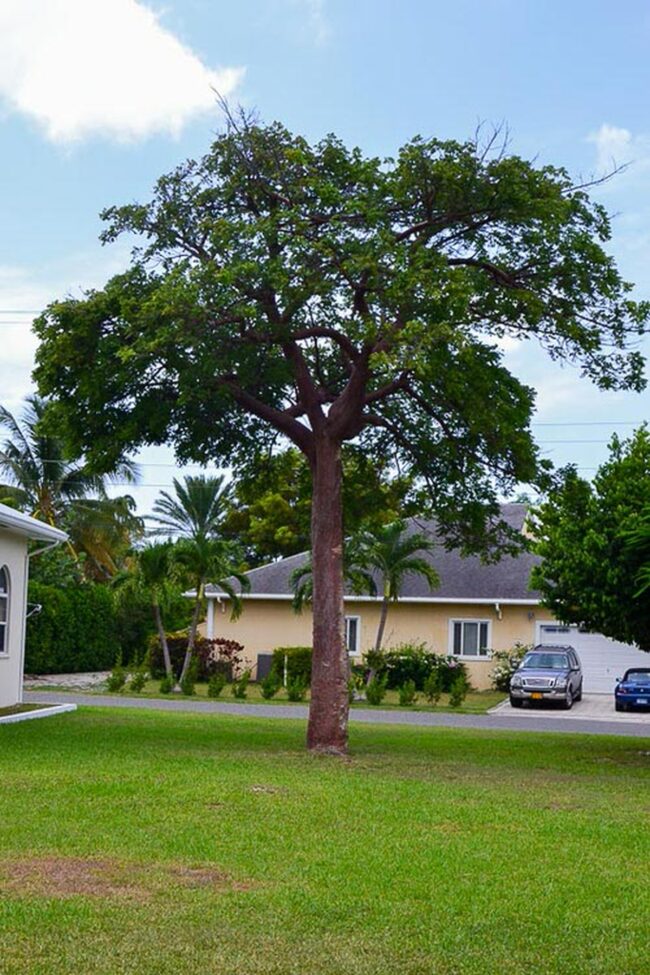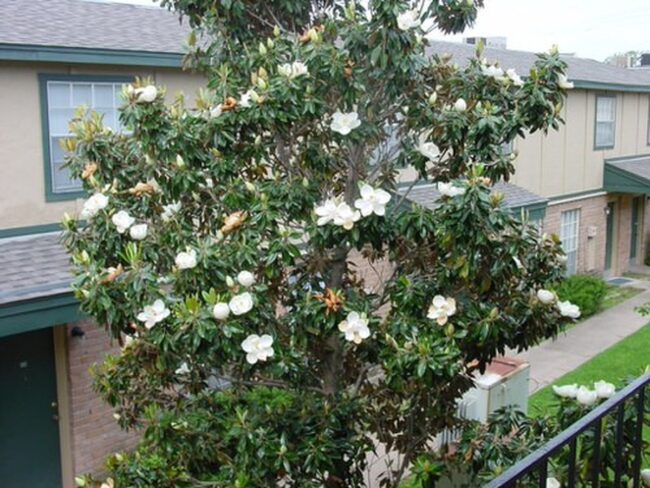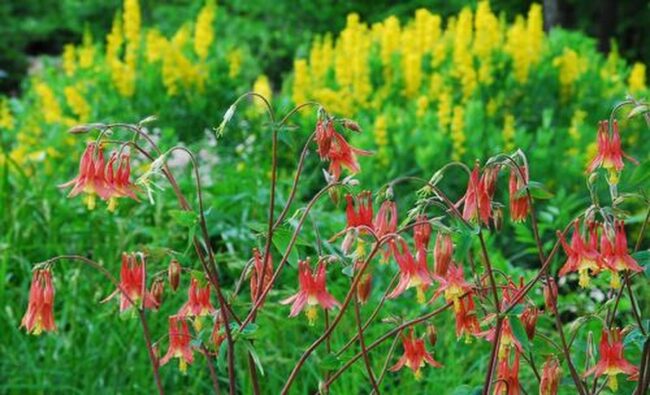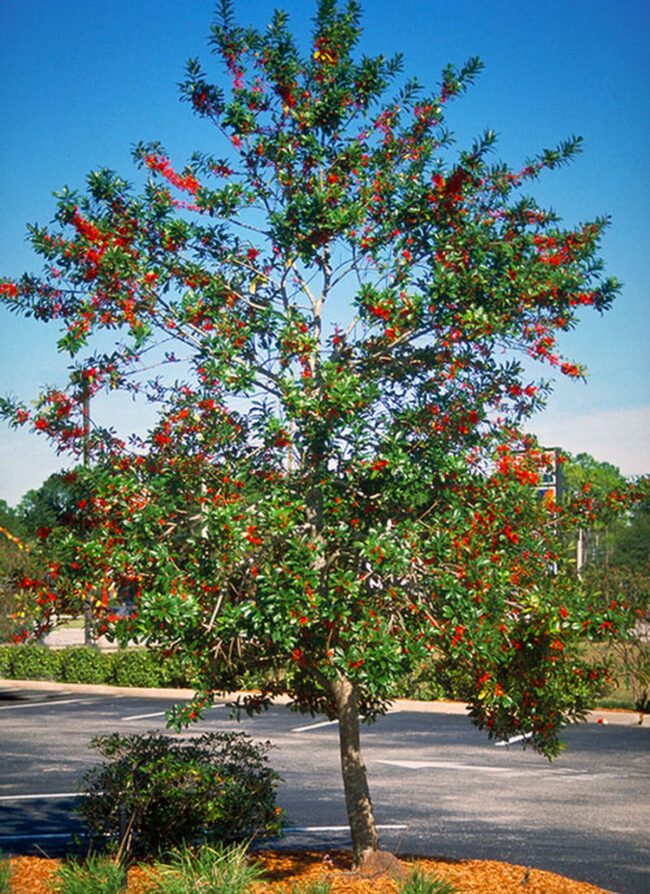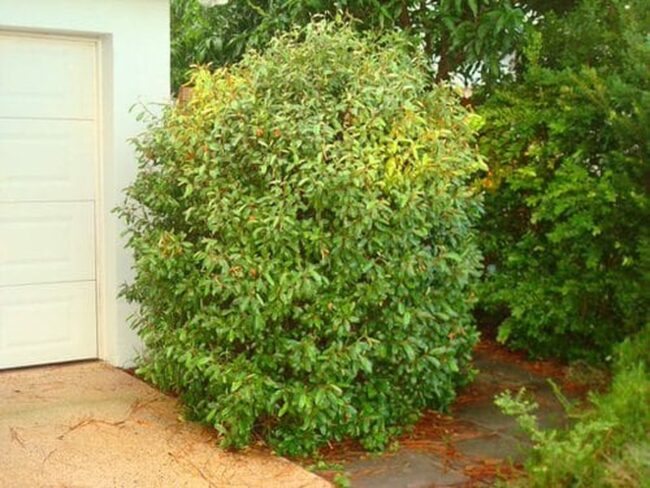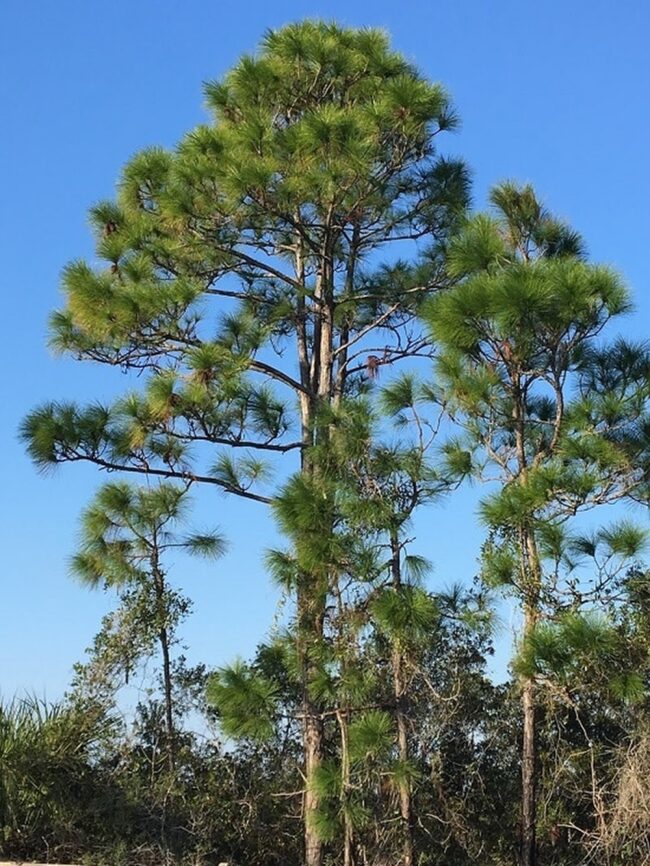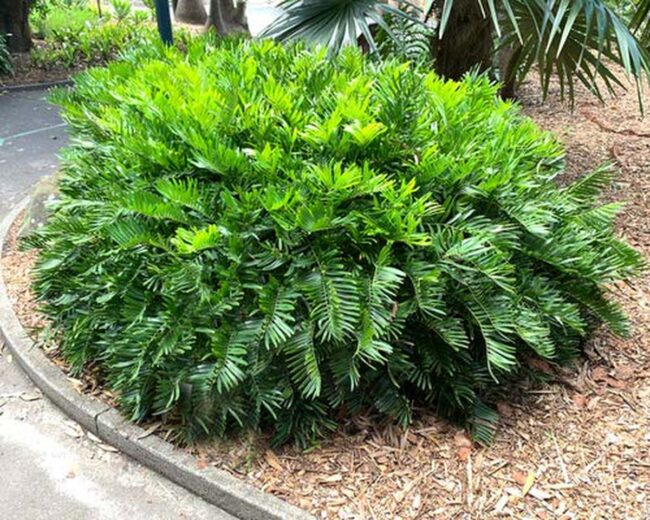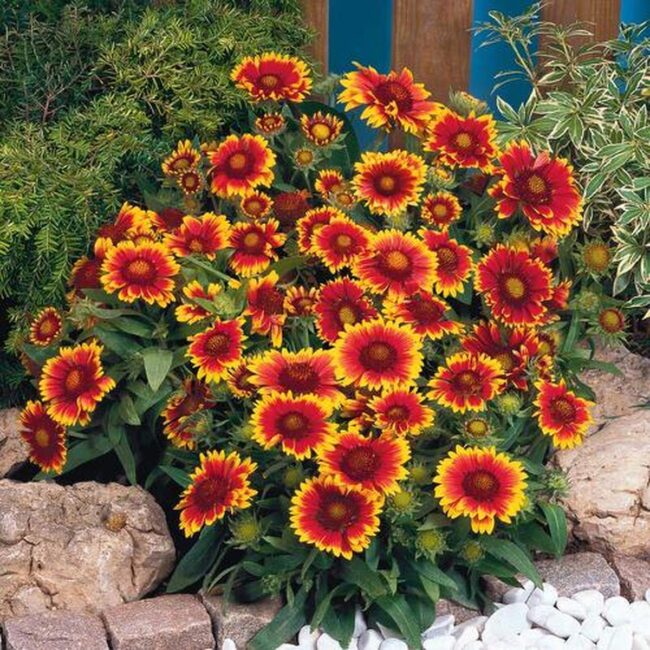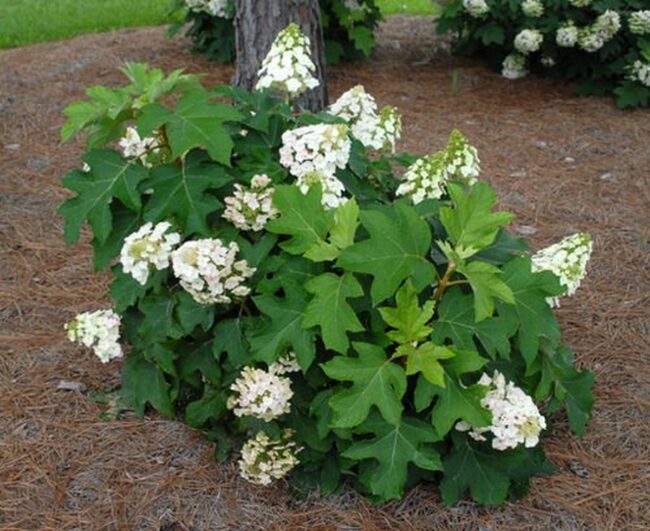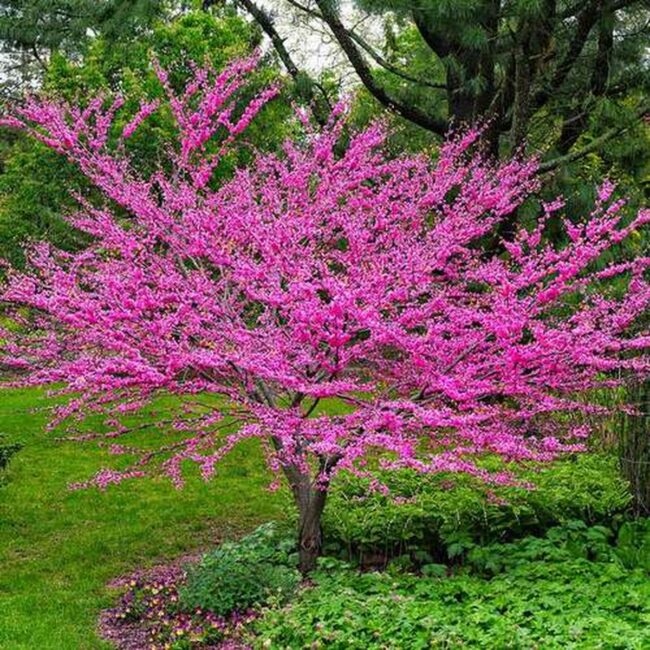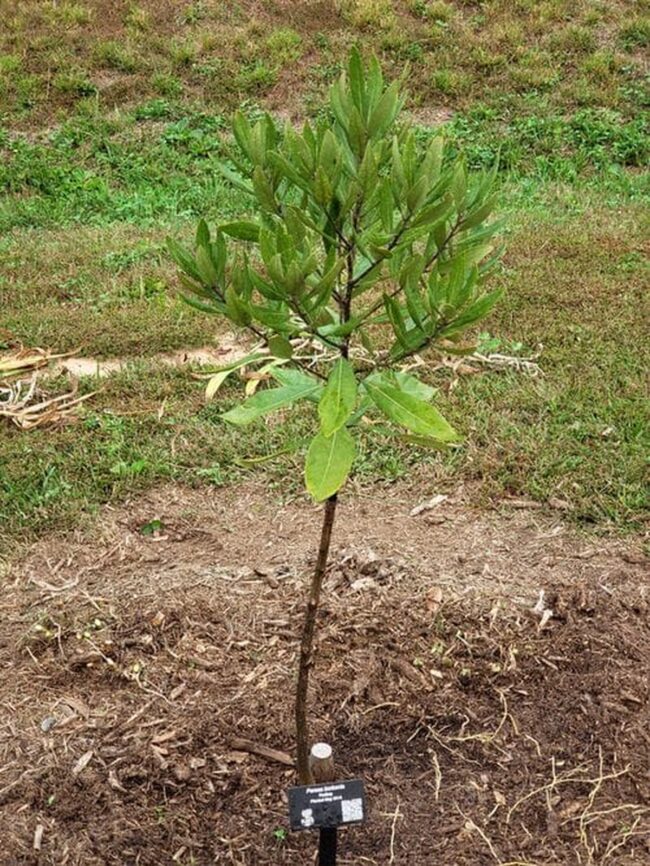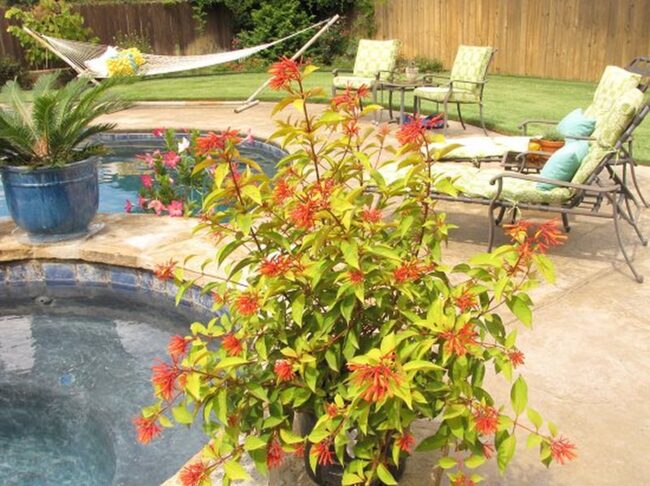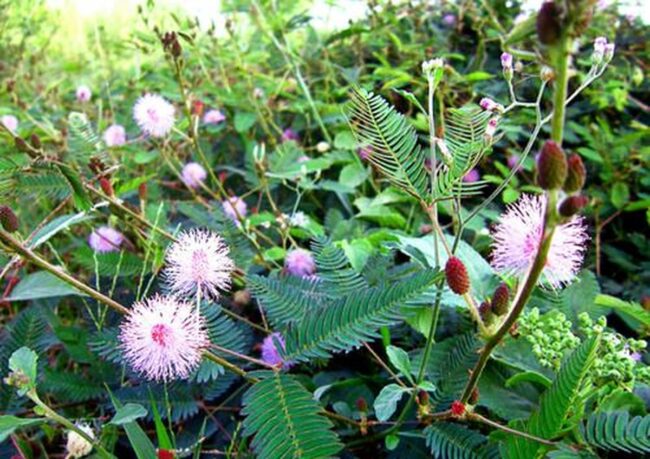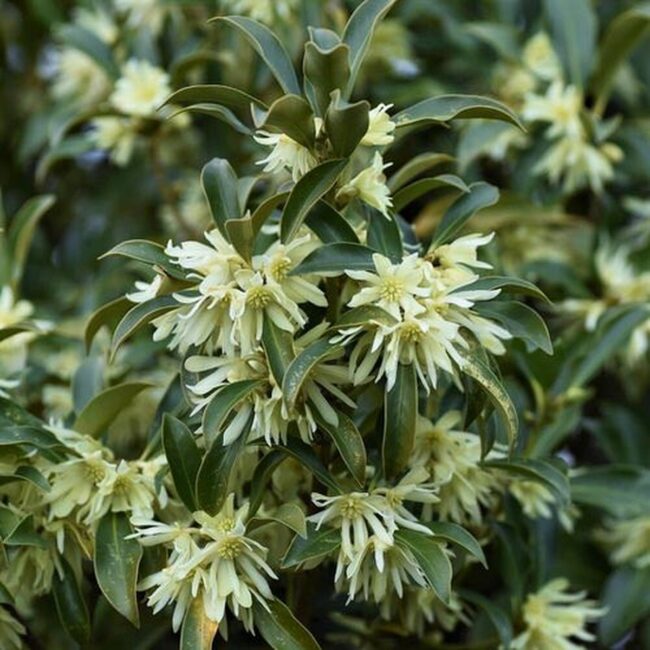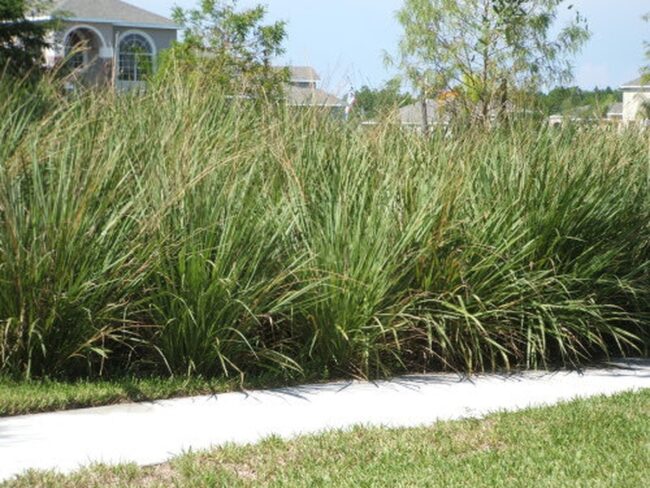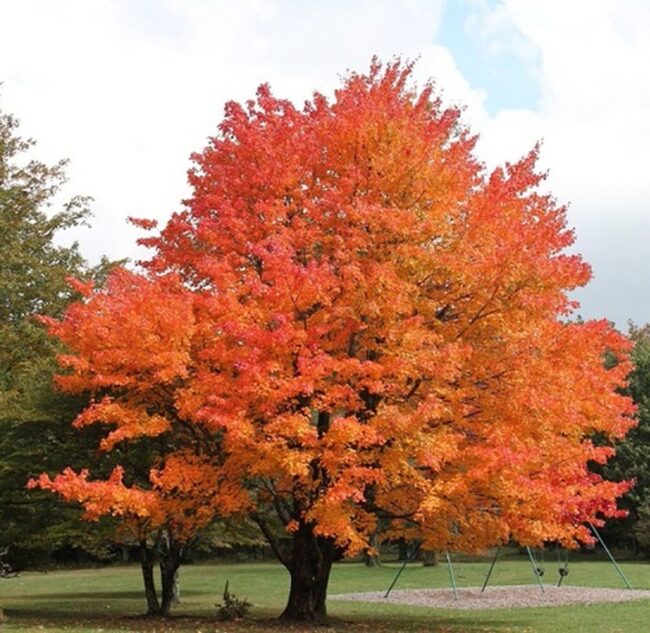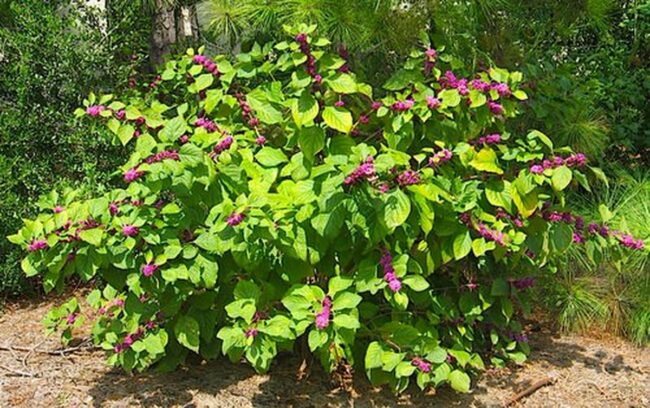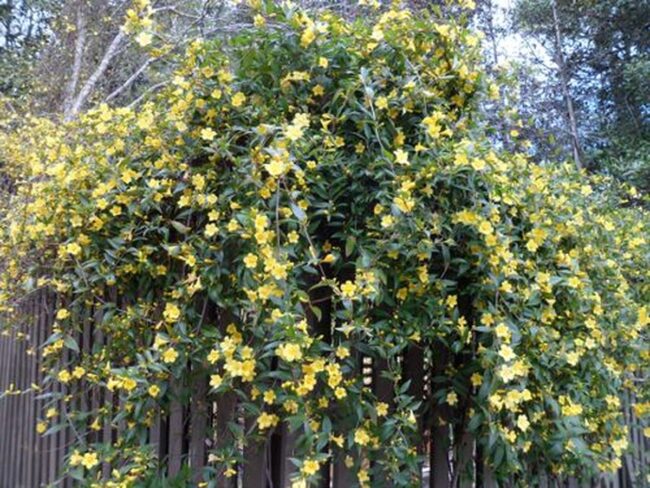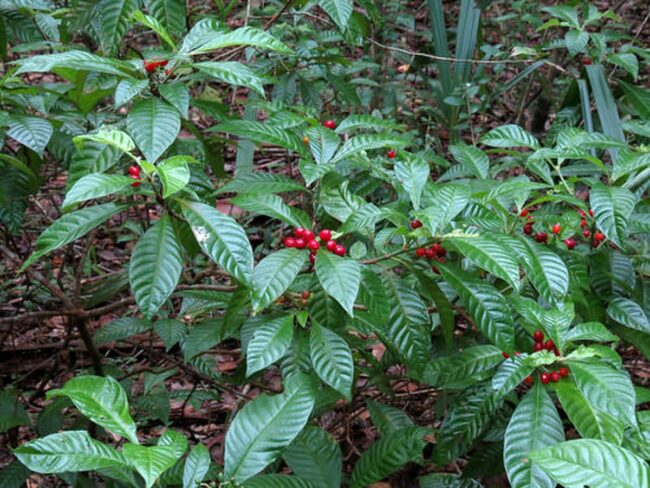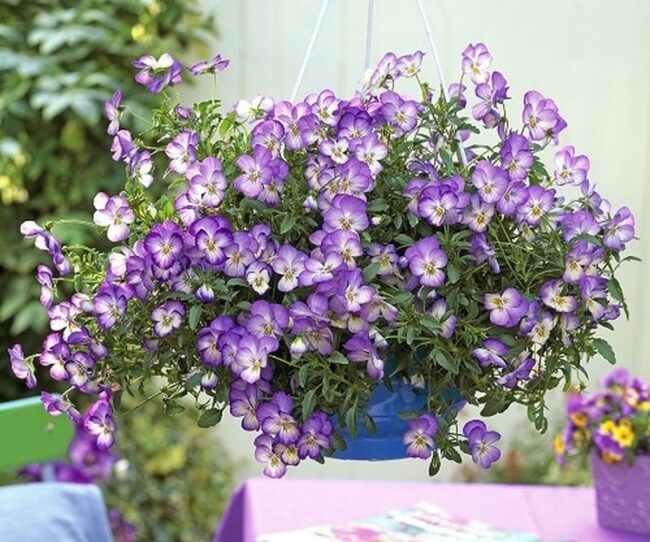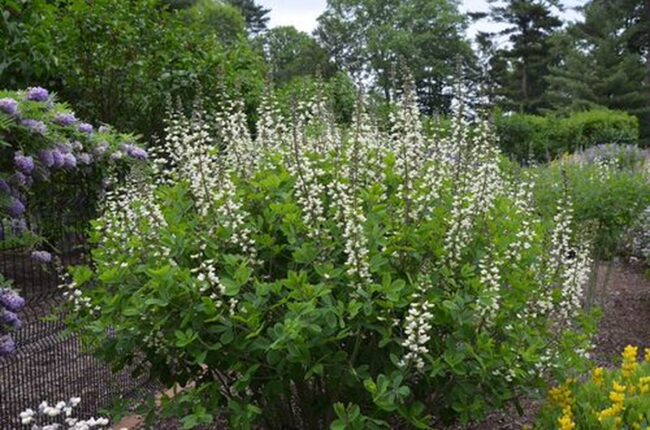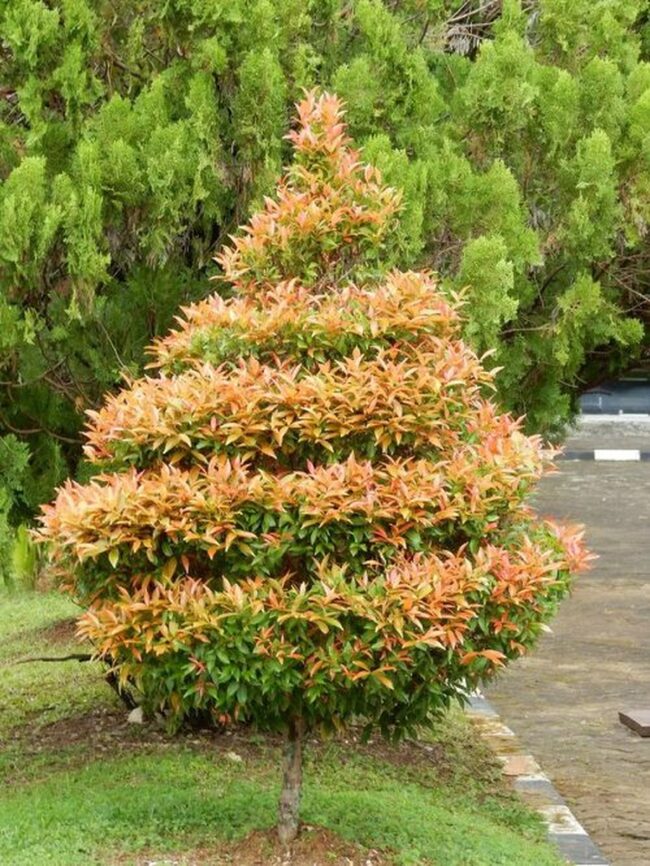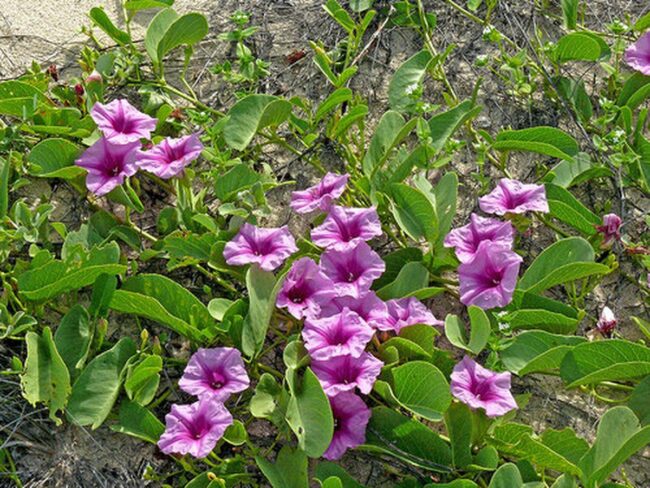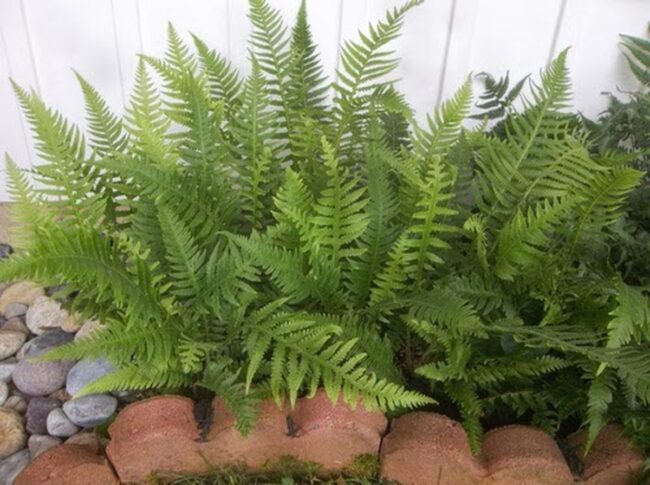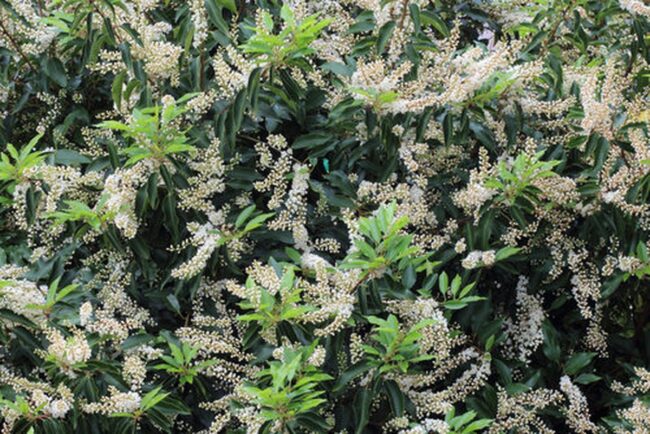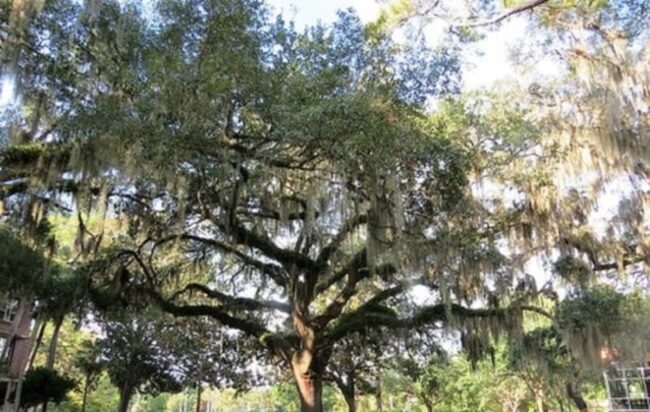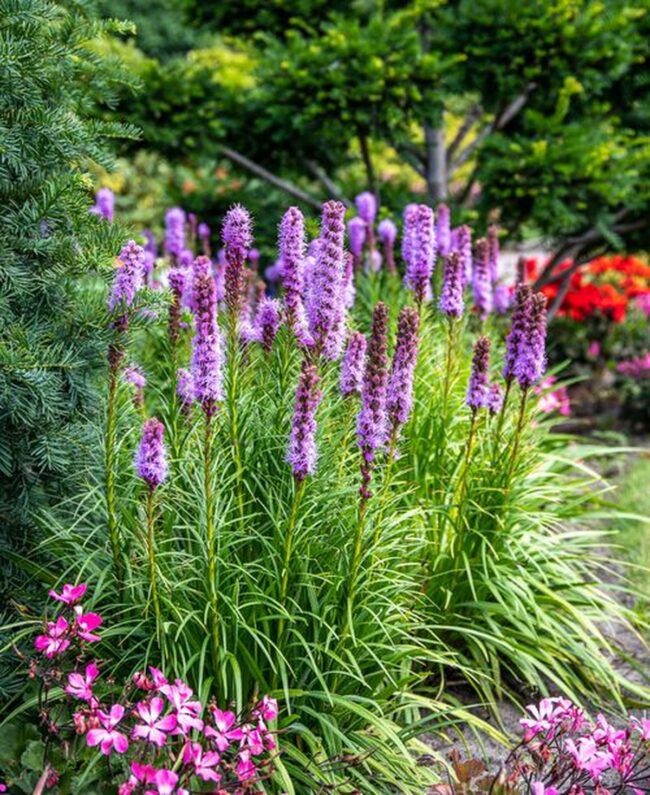62 Stunning Native Florida Plants and Trees to Beautify Your Space
Florida's lush landscapes are home to a stunning array of native plant species that paint the state's natural canvas with vibrant colors and unique textures.
The diverse ecosystems of this southeastern state nurture an incredible botanical world that reflects the region's rich ecological heritage.
Native plants have evolved perfectly to thrive in Florida's tropical and subtropical environments, showcasing remarkable adaptations to sandy soils, intense sunlight, and fluctuating moisture conditions.
These indigenous botanical treasures not only contribute to the state's biodiversity but also play crucial roles in supporting local wildlife, providing food and shelter for numerous animal species.
The remarkable resilience of these native plants demonstrates their ability to withstand challenging environmental conditions while maintaining intricate connections within complex ecological networks.
Gardeners, landscapers, and nature enthusiasts increasingly recognize the immense value of incorporating these local plant species into residential and commercial landscapes.
Understanding and appreciating Florida's native botanical world offers profound insights into the delicate balance of natural systems and the extraordinary beauty of local ecosystems.
Wild Lime
Wild lime are charming native florida trees with multi-stemmed structures perfect for garden diversity.
Compact evergreen branches spread beautiful compound leaves across landscapes.
Sharp thorns add unexpected texture and visual interest.
Delicate yellow-green flower clusters emerge during growing seasons, attracting pollinators eagerly.
Reaching mature heights around 25 feet, these trees fit smoothly into many landscape designs.
Wild lime trees handle full sun and partial shade conditions confidently.
Impressive drought tolerance makes them resilient garden companions.
Florida gardeners appreciate their adaptability in different soil types, from acidic to alkaline environments.
Beach sunflower
Beach sunflowers bloom with radiant yellow petals that light up coastal gardens effortlessly.
Compact plants reach between 2 to 10 inches tall, spreading cheerful color across sandy landscapes.
Native Florida gardeners love these resilient flowers for their ability to withstand salty sea breezes and harsh coastal conditions.
Small but mighty, beach sunflowers thrive in full sun or partial shade, creating stunning ground cover with minimal maintenance.
Sandy soil provides the perfect environment for these hardy plants to flourish throughout the year.
Coastal gardens gain instant warmth and sunshine from these cheerful yellow flowers.
Drought-tolerant and salt-resistant, beach sunflowers transform ordinary spaces into vibrant seaside retreats.
Wild Tamarind
Wild tamarind trees bring exotic caribbean charm to south florida landscapes with impressive architectural grace.
Mature specimens reach towering heights near 60 feet, spreading expansive green canopies across garden spaces.
Native trees thrive perfectly in sandy or loamy soils within zones 10a to 11.
Their delicate feathery leaves provide elegant shade while attracting local wildlife populations.
Sunlight enhances their rich green foliage, creating dramatic visual interest in residential landscapes.
Branches spread wide, developing a sculptural form that looks beautiful through seasonal changes.
Tropical gardens gain dramatic character with wild tamarind's distinctive presence.
Black-Eyed Susan
Black-eyed susans burst with golden sunshine across florida gardens, drawing pollinators like bees and butterflies with their cheerful daisy-like blooms.
These hardy perennials reach up to three feet tall, standing strong in sandy or well-drained soils.
Summer heat doesn't intimidate these resilient flowers, which happily soak up sunshine for two to six hours daily.
Native plants love Florida's challenging conditions, and black-eyed Susans prove this perfectly.
Their vibrant yellow, orange, and red petals create dramatic splashes of color among green foliage.
Drought and salty environments pose no problem for these tough wildflowers.
Minimal care ensures these beautiful bloomers return year after year, making them a smart choice for local landscapes.
Dotted Horsemint
Dotted horsemint are magical wildflowers packed with pollinator-friendly magic for florida gardens.
Pale lavender flower clusters dance above pink-purple bracts, creating eye-catching visual drama from late spring through autumn.
Wild bees and butterflies absolutely love these native plants that thrive in sandy or loamy soils.
Heat and drought never intimidate these tough perennials standing around 4 feet tall.
Resilient stems provide excellent texture across landscape designs while supporting local ecosystems.
Minimal maintenance means maximum landscape impact with these stunning botanical gems.
Gopher Apple
Gopher apple provides a durable groundcover solution for florida gardens with exceptional adaptability.
Delicate white blossoms emerge from sturdy green stems, creating visual interest across sandy or limestone landscapes.
Coastal environments welcome this plant's remarkable resilience against salty winds and drought conditions.
Native Florida gardens benefit from its leathery leaves and compact growth pattern.
Low-maintenance gardeners appreciate how easily gopher apple establishes itself in challenging terrain.
Small white flowers complement the plant's rich green foliage, attracting pollinators throughout warm seasons.
Landscape designers select this species for its ability to thrive in harsh southern environments.
Compact root systems help prevent soil erosion while adding natural beauty to garden spaces.
Blue Mistflower
Blue mistflower dances through late summer and fall gardens with brilliant blue, violet, and white flower clusters that magnetize pollinators.
Native gardeners treasure this perennial wildflower for its effortless beauty and adaptability to varying sunlight conditions.
Reaching 2-3 feet tall, blue mistflower spreads generously across landscapes with graceful ease.
Moist, humusy soil encourages robust growth and ensures healthy plant development.
Butterflies and bees swarm these delicate blossoms, turning garden spaces into vibrant ecosystems.
Southern gardens especially benefit from this resilient wildflower's ability to thrive in challenging environmental conditions.
Coral Honeysuckle
Coral honeysuckle delivers colorful garden magic with brilliant red trumpet-shaped flowers that dance through spring and summer landscapes.
Native Florida gardeners love this climbing vine for its enchanting presence and wildlife-friendly characteristics.
Hummingbirds flock to its sweet nectar, transforming quiet outdoor spaces into buzzing ecosystems.
Reaching heights around 15 feet, this evergreen plant thrives in full sunlight and slightly acidic soil conditions.
Robust growth patterns allow coral honeysuckle to climb trellises, fences, and garden structures with elegant ease.
Vibrant red blossoms provide continuous visual interest from spring through summer months.
Natural beauty meets ecological function with this exceptional Florida plant.
Red buckeye
Red buckeye erupts with stunning crimson flower clusters that electrify woodland gardens.
Small deciduous trees reach modest heights around 20 feet, providing dramatic spring displays.
Glossy green leaves create rich backgrounds for brilliant tubular blooms.
Pollinators adore these dramatic nectar-rich flowers, drawing butterflies and hummingbirds closer.
Native woodland environments inspire this plant's natural growth patterns.
Well-drained soil and partial shade encourage healthy development for these graceful specimens.
Careful gardeners should remember its seed pods contain toxic compounds requiring careful handling.
Scarlet sage
Scarlet sage is a garden showstopper with brilliant red tubular flowers that ignite landscapes from spring through fall.
Native Florida gardeners prize this perennial for its dramatic visual impact and wildlife-friendly nature.
Standing up to 4 feet tall, scarlet sage demands full sun exposure and thrives in well-draining, slightly alkaline soil.
Hummingbirds and butterflies flock to its vivid blooms, transforming garden spaces into dynamic ecosystems.
Effortless to grow and maintain, this plant brings southern charm and vibrant color to any landscape design.
Wild beauty meets practical gardening with this stunning native species.
Scarlet sage becomes a focal point that turns ordinary gardens into extraordinary natural havens.
Marlberry
Marlberry radiates subtle southern charm with its glossy dark green leaves that perfectly suit florida gardens.
Delicate white flowers grace landscape edges throughout multiple seasons, creating soft visual interest.
Purple fruits emerge in spring, beckoning local wildlife to explore its branches.
Native landscapes sparkle with marlberry's understated elegance and adaptable growing conditions.
Sandy or loamy soils support this plant's healthy development in various garden settings.
Florida gardeners appreciate marlberry's ability to thrive in partially shaded areas where many plants cannot survive.
Compact shrub sizes allow flexible placement near walkways or garden borders.
Small clusters of flowers and fruits provide continuous seasonal beauty without demanding extensive maintenance.
Swamp mallow
Swamp mallow enchants gardens with brilliant scarlet blossoms that beckon pollinators and wildlife.
Native Florida landscapes benefit immensely from its robust growth and stunning visual impact.
Sunlight fuels this plant's vibrant performance, requiring six to eight hours of direct rays daily.
Sandy loamy soil with consistent moisture provides the perfect environment for swamp mallow's spectacular development.
Wildlife finds refuge among its lush foliage and brilliant red flowers.
Ecosystem balance improves as this native plant attracts beneficial insects and supports local biodiversity.
Sabal palm
Sabal palms are majestic sentinels of florida's green world, rising dramatically across landscapes with commanding elegance.
Native Florida ecosystems embrace these resilient trees that grow steadily in sandy or loamy terrains.
Distinctive cabbage-like fronds spread wide, capturing sunlight and creating natural architectural interest.
Mature specimens reach impressive heights of 50 feet, providing dramatic vertical elements in landscaping designs.
Drought-resistant and adaptable, these palms thrive under intense sunshine with minimal intervention.
Wildlife finds shelter among their broad leaves, making them ecological powerhouses.
Seagrape
Seagrapes are coastal champions with knockout round leaves sporting eye-catching red veins that signal florida's tropical beauty.
Beach landscapes transform when these hardy plants take root in sandy soils.
Native gardeners love their attractive foliage and ability to withstand harsh coastal conditions.
Clusters of small green fruits dangle from branches, adding visual interest to waterfront landscapes.
Drought resistance makes seagrapes powerful additions to challenging garden environments.
Wind and salt spray cannot stop these resilient plants from growing strong and healthy.
Local ecosystems benefit from their presence, providing shelter for small wildlife and preventing coastal erosion.
Landscapers appreciate seagrapes for their low-maintenance nature and stunning coastal aesthetic.
White Fringe Tree
White fringe trees burst with delicate snowflake-like clusters that transform woodland gardens into magical landscapes.
Native woodland gardeners prize these graceful trees for their exceptional spring blossoms and adaptable nature.
Chionanthus virginicus reaches up to 20 feet tall with elegant branching patterns that provide visual drama.
Mature specimens produce clusters of pure white flowers hanging like lacy curtains against deep green foliage.
Southern landscapes benefit from its native roots and low-maintenance character.
Pollinators adore the intricate flower clusters that emerge in late spring.
Southern wax myrtle
Southern wax myrtle elevates garden landscapes with its rugged beauty and versatile nature.
Wild-looking branches spread effortlessly across spaces from 15 to 25 feet tall.
Waxy blue-gray berries dot the plant's dense green foliage, creating a natural woodland aesthetic.
Native Floridians love how this evergreen shrub requires minimal maintenance while providing excellent wildlife support.
Berries attract local birds and pollinators throughout seasonal changes.
Drought-resistant qualities make this plant perfect for sustainable landscape designs.
Muhly Grass
Muhly grass electrifies florida gardens with delicate pink, purple, and white flower stalks dancing across landscapes.
Ornamental collectors love its graceful height between 2-3 feet that catches sunlight magnificently.
Landscape designers appreciate its ability to grow in full sun environments with well-drained soil conditions.
Native gardens benefit from its continuous blooming season spanning early spring through winter months.
Pollinators explore its airy texture and subtle color variations with enthusiasm.
Gentle breezes cause the grass to sway elegantly, creating natural movement in garden spaces.
Drought-tolerant characteristics make muhly grass an ideal selection for Florida landscape designs.
Joewood
Joewood delivers extraordinary elegance through delicate ivory flower clusters dancing against florida's natural landscape.
Native shrubs grow compact and sturdy in sandy coastal environments.
Small white blossoms spread five petals creating soft visual textures along branches.
Mediterranean-like characteristics make joewood perfect for Florida landscapes requiring low maintenance solutions.
Gentle ivory flowers contrast beautifully with deep green foliage throughout summer months.
Mature plants reach modest heights around 10 feet without demanding extensive care.
Landscape designers recommend joewood for waterfront and sandy terrain gardens seeking understated botanical charm.
Yucca
Yucca are drought-resistant desert plants perfectly suited for florida's challenging landscapes.
Sharp sword-like leaves punctuate garden spaces with architectural drama.
Florida hosts three native species: Spanish bayonet, Adam's needle, and mound Spanish dagger.
Clusters of white blossoms emerge during mid-summer or early fall, introducing elegant vertical lines.
Sun-loving roots spread quickly in sandy, well-draining soils.
Minimal water requirements make yucca ideal for xeriscaping projects.
Landscape designers prize these plants for their sculptural presence and year-round green structure.
Pond cypress
Pond cypress grace florida's wetlands with unparalleled adaptability and ecological significance.
Native landscapes welcome this deciduous tree as a resilient marvel with feathery foliage transforming golden-brown during autumn months.
Wildlife finds sanctuary within its branches while gardeners appreciate its low-maintenance character.
Water-loving environments provide perfect conditions for pond cypress to establish robust root systems.
Swampy terrain becomes an ideal home where these trees showcase incredible survival skills.
Landscape designers value pond cypress for their natural beauty and environmental contributions.
Seasonal changes highlight the tree's stunning color transitions from vibrant green to warm bronze.
Ecological balance flourishes as pond cypress integrate seamlessly into Florida's intricate natural ecosystems.
Elliott’s aster
Elliott's aster sparks garden magic with lavender blooms and warm yellow centers, inviting pollinators into your landscape.
Native Florida perennials reach impressive heights around five feet, commanding attention through winter gardens.
Sunshine becomes this plant's best friend, encouraging robust growth in full exposure.
Moist soil conditions help Elliott's aster flourish without demanding complex maintenance.
Bees and butterflies gravitate toward these delicate flowers, transforming outdoor spaces into mini wildlife havens.
Ecological balance comes naturally with this charming native plant.
Landscape designers treasure Elliott's aster for its effortless beauty and environmental contributions.
Gumbo Limbo tree
Gumbo limbo trees sport a stunning copper-bark design that continually peels like sunburned skin.
Locals nicknamed this tree the "tourist's tree" because its reddish bark resembles a sunburned visitor's complexion.
Native Florida environments welcome these trees as perfect shade providers.
Sunlight encourages healthy growth in sandy or loamy ground.
Wildlife finds comfort among its branches throughout different seasons.
Landscapers select gumbo limbo trees for their unique texture and low-maintenance characteristics.
Tropical gardens gain extraordinary visual interest with these remarkable botanical specimens.
Southern magnolia
Southern magnolia reigns supreme with its dramatic dark green foliage and pure white blossoms that paint gardens with southern charm.
Mature trees spread wide branches filled with glossy leaves that shimmer under sunlight.
Delicate flowers release sweet perfume across outdoor spaces during warm months.
Native southern landscapes benefit from its striking presence and low maintenance requirements.
Landscaping professionals recommend planting in well-draining, slightly acidic soil for optimal growth.
Full sun or light shade helps this tree develop strong roots and healthy structure.
Mature specimens provide excellent shade and visual drama for residential properties.
Columbine
Columbine spreads delightful red and yellow bell-shaped flowers across woodland gardens with graceful woodland charm.
Native woodland wildflowers bloom beautifully in partial shade and sandy soil conditions.
Gardens welcome these perennial plants that attract hummingbirds and butterflies with elegant hanging blossoms.
Wild columbine grows naturally in eastern North American forest edges and rocky slopes.
Spring brings clusters of unique drooping blooms that dance above green foliage.
Wildlife finds these flowers irresistible as nectar sources throughout flowering season.
Mountain meadows and forest understories provide perfect habitats for these delicate native plants.
Holly Trees
Holly trees embellish florida landscapes with elegant southern grace and resilience.
Glossy green leaves complement clusters of vibrant red or orange berries that illuminate garden spaces during autumn months.
Native Florida gardens welcome these magnificent trees that effortlessly reach heights up to 50 feet.
Mature holly trees provide stunning visual interest with their distinctive foliage and colorful berry clusters.
Landscape designers love incorporating these hardy specimens for their year-round aesthetic appeal.
Florida homeowners benefit from holly trees' low-maintenance nature and dramatic presence.
Seasonal beauty defines these remarkable southern landscape gems.
Jamaica caper
Jamaica caper brings dramatic flair with stunning purple flowers and glossy green leaves perfect for florida gardens.
Long expressive stamens dance among vibrant petals, creating visual drama in landscape designs.
Sunlight becomes essential for robust growth, thriving in full or partial shade conditions.
Well-draining soil mixed with lime rock provides ideal growing environment for this spectacular plant.
Landscapers appreciate its ability to flourish in warm Florida climates with minimal maintenance.
Compact or sprawling forms adapt easily to different garden spaces, making jamaica caper a versatile botanical treasure.
White Indigo Berry
White indigo berry draws gardeners with its hardy nature and sculptural elegance in florida landscapes.
Compact shrubs spread smoothly across sandy terrain, reaching impressive heights near 20 feet.
Dense foliage provides intricate textural interest with small spiny leaves that catch sunlight beautifully.
Native woodland environments inspire this plant's robust character and low-maintenance personality.
Thriving under full sun or partial shade conditions, white indigo berry adapts effortlessly to different garden settings.
Rocky or sandy soils welcome its roots without complicated care requirements.
Landscape designers appreciate its natural wild aesthetic and ability to blend seamlessly with surrounding native plants.
Drought-tolerant characteristics make this shrub an excellent choice for sustainable Florida gardens.
Slash Pine Tree
Slash pine trees provide resilient landscape solutions for southeastern gardens with their towering silhouettes and wildlife-friendly branches.
Native pine species flourish in sandy, acidic soils across Florida's warm regions.
Pine needles carpet the ground underneath, creating natural mulch while attracting native birds and small animals.
Mature trees reach impressive heights between 60 and 80 feet, making dramatic landscape statements.
Sunlight requirements include six to eight hours of direct exposure daily, ensuring healthy growth and robust development.
Landscape designers recommend planting these trees in open spaces with excellent drainage and minimal soil compaction.
Passion Flower
Passion flowers herald exotic garden drama with their lavender petals and intricate central designs.
Climbing vines stretch dramatically across trellises and arbors, reaching impressive heights of 30 feet.
These perennial beauties flourish in sunny locations bathed in four to six hours of direct sunlight daily.
Native pollinators find passion flowers irresistible with their unique floral architecture.
Strategic placement allows these stunning plants to transform garden spaces into wild, tropical scenes.
Spectacular blooms emerge consistently throughout warm seasons, drawing visual interest from every angle.
Passionate gardeners cherish these dramatic botanical wonders for their unparalleled aesthetic appeal.
Southern Red Cedar Tree
Southern red cedar tree stands as a hardy landscape champion with deep florida roots.
Robust evergreen branches create dense green canopies stretching up to 40 feet tall.
Native environments reveal its remarkable ability to flourish in challenging conditions like sandy soils and coastal regions.
Salt and drought resistance make this tree a resilient garden companion for Florida landscapes.
Its emerald-green needles provide year-round visual interest while supporting local wildlife ecosystems.
Natural windbreaks emerge from its strong branching structure, protecting nearby plants from harsh elements.
Landscape designers frequently select this tree for its ecological benefits and stunning architectural presence in Southern gardens.
Coontie
Coontie spreads leafy green magic across north florida gardens with its feathery fronds and adaptable nature.
Reaching modest heights around three feet, this evergreen plant conquers tough terrain like coastal regions and sandy landscapes.
Native Florida gardeners appreciate its resilience in challenging soil conditions where other plants wither.
Cold and salt tolerance make coontie a smart landscape choice for Florida environments.
Roots dig deep into well-draining sandy soil, ensuring steady growth throughout seasonal changes.
Wildlife finds sanctuary among its delicate foliage, making coontie more than just a decorative plant.
Ecological benefits flow naturally from this unassuming green performer.
Blanket flower
Blanket flowers spark wild color explosions across florida gardens with radiant orange, red, and purple petals.
Native wildflowers bloom continuously through summer and early fall, attracting pollinators like butterflies and bees.
Gaillardia species thrive in sandy, well-draining soils where intense sunlight encourages robust growth.
Heat-tolerant perennials spread quickly, forming lush ground cover in coastal and inland landscapes.
These cheerful flowers require minimal water once established, making them perfect for xeriscaping projects.
Mediterranean-inspired garden designs benefit from blanket flowers' natural charm and drought-resistant qualities.
Landscape designers frequently recommend these resilient plants for Florida's challenging environmental conditions.
Butterflyweed
Butterflyweed sparks garden magic with its bold orange clusters that dance amid green stems.
Sun-loving gardeners quickly appreciate this hardy perennial's drought-resistant nature.
Brilliant blossoms emerge vibrantly, drawing monarch butterflies and other pollinators to their nectar-rich centers.
Sandy or loamy soil supports strong root systems for this resilient plant.
Sunny locations encourage robust growth, ideal for gardeners seeking low-maintenance beauty.
Mature plants reach up to three feet tall, providing striking vertical interest.
Butterflyweed connects gardens with local ecosystem health through its ecological contributions.
Oakleaf hydrangea
Oakleaf hydrangea brings extraordinary woodland charm to southern gardens with dramatic white flower clusters and sculptural leaves resembling oak shapes.
Native southeastern shrubs flourish beautifully in partially shaded areas with rich, well-draining soil.
Delicate cone-shaped blooms emerge during summer months, creating elegant garden focal points.
Summer sunlight nurtures these graceful plants without scorching their magnificent foliage.
Pollinators adore these woodland perennials, buzzing happily around their intricate flower clusters.
Garden designers appreciate their adaptability in landscape design.
Shade-loving characteristics make oakleaf hydrangeas perfect for woodland garden environments.
Southern gardeners particularly treasure these low-maintenance native plants for their stunning visual appeal and ecological benefits.
Button Sage
Button sage brings robust beauty to florida gardens with compact white blooms and deep green foliage.
Small delicate blossoms peek out among dense leaves, creating a charming landscape accent.
Sandy soil becomes a perfect home for this resilient plant that survives harsh conditions with ease.
Native Florida landscapes benefit from button sage's ability to withstand intense sunlight and minimal water.
Pollinators appreciate its nectar-rich flowers that attract butterflies and small bees throughout warm seasons.
Landscape designers appreciate its low maintenance and consistent growth pattern.
Compact size makes button sage an ideal choice for small garden spaces and rock gardens where other plants struggle to survive.
Eastern redbud
Eastern redbud sparkles with delicate pink blossoms that dance across branches before leaves emerge.
Small trees spread 20 to 30 feet wide with graceful limbs reaching toward sunlight.
Woodland gardens benefit from these native trees with heart-shaped leaves that transition from pink flowers to rich green summer foliage.
Pollinators swarm to its blossoms, making this plant a wildlife magnet for local ecosystems.
Well-drained soil helps these trees establish strong root systems quickly.
Southern landscapes come alive with redbud's gentle pink clouds signaling winter's end.
Nature lovers treasure this understory tree for its elegant structure and ecological contributions.
Bahama cassia
Bahama cassia is a cheerful florida native that lights up gardens with golden yellow flowers bursting across autumn landscapes.
Its compact form reaches nine feet tall, making an impressive visual statement in yards and green spaces.
Sandy, well-drained acidic soils provide the perfect home for this resilient plant.
Sunlight fuels its robust growth, though it tolerates partial shade without missing a beat.
Wildlife appreciates its ecological contributions, attracting pollinators with brilliant blossoms.
Local landscapers recommend this short-lived perennial for gardeners seeking dynamic seasonal interest.
Red Bay
Red bay trees burst with natural florida charm, offering gardeners a stunning landscape addition that wildlife loves.
Tall evergreens reaching 30 to 70 feet, these trees create dramatic green backdrops with deep blue fruits.
Lush green foliage provides dense shade for any outdoor space.
Light sandy or medium loamy soils help red bay trees grow strong and healthy.
Their aromatic leaves release pleasant scents that attract local birds and insects.
Mature trees develop impressive canopies that protect smaller plants underneath.
Native ecosystems benefit from red bay's ability to support multiple wildlife species.
Firebush
Firebush enchants gardeners with explosive orange-red flowers blazing through warm seasons.
Native Florida shrubs grow quickly in full sunshine, reaching impressive heights with minimal maintenance.
Drought-resistant plants thrive in well-drained soil and attract pollinators like butterflies and hummingbirds.
Green leaves complement vivid blossoms, creating stunning visual contrast in landscaping.
Local wildlife gravitates toward these resilient perennials that withstand intense heat and challenging growing conditions.
Versatile plants work beautifully in borders, hedges, and wildlife gardens.
Colorful blooms provide continuous visual interest from late spring through autumn.
Powderpuff mimosa
Powderpuff mimosa are delicate pink-blossomed ground cover plants perfect for florida gardens.
Small clusters of fluffy flowers dance above compact green leaves, spreading quickly across garden spaces.
Moist, well-drained soil helps powderpuff mimosa establish strong roots and produce continuous blooms from spring through fall.
Florida landscapes benefit from its low profile and vibrant color palette.
Native ecosystems support these charming plants, making them excellent choices for sustainable landscaping.
Passionate gardeners can quickly transform bare ground into a soft, colorful carpet with just a few strategic plantings.
Star anise
Star anise explodes with exotic charm in florida gardens, delivering dramatic star-shaped pods that capture immediate attention.
Vibrant blossoms ranging from red to white illuminate green spaces with natural elegance.
Slightly acidic soil conditions help star anise flourish beautifully and maintain robust health.
Moisture-rich environments encourage steady growth and ensure plant vitality.
Landscape designers love incorporating this aromatic plant for its unique visual structure and sensory appeal.
Fragrant characteristics make star anise a remarkable addition to subtropical garden designs.
Spreading gracefully, this plant transforms ordinary outdoor spaces into extraordinary botanical experiences.
Clusia
Clusia brings tropical elegance to gardens with its robust glossy leaves and impressive salt tolerance.
Landscapes come alive with these stunning shrubs that reach ten feet tall and spread wide.
Coastal regions especially benefit from this plant's ability to withstand harsh salt conditions.
Its leathery green foliage creates a lush, dense appearance that transforms outdoor spaces.
Drainage plays a critical role in maintaining healthy clusia plants, so well-aerated soil ensures optimal growth.
Landscape designers appreciate how easily these plants adapt to different environments.
Salt-resistant and low-maintenance, clusia provides a perfect green solution for challenging garden spots.
Azaleas
Azaleas are stunning flowering shrubs that paint gardens with breathtaking spring color across southern landscapes.
Clusters of delicate pink, red, and white blossoms transform garden spaces into magical havens.
Southern gardeners cherish these evergreen plants for their low-maintenance nature and dramatic floral displays.
Native to southeastern United States, azaleas grow best in partially shaded areas with acidic, well-draining soil.
Mature plants typically reach three to five feet tall, providing substantial visual interest in landscape designs.
Butterflies and pollinators adore these flowering shrubs, making them excellent additions to wildlife-friendly gardens.
Proper pruning after flowering helps maintain their compact shape and encourages robust future growth.
Fakahatchee grass
Fakahatchee grass spreads lush green blades across subtropical landscapes with unmatched elegance.
Florida gardeners treasure this robust native plant for its adaptable nature and impressive height.
Meadow-like clusters reach four to six feet tall, swaying gracefully in gentle breezes.
Dense green foliage thrives in wet or dry conditions, making it perfect for challenging garden spaces.
Water-loving roots anchor easily in moist areas where other plants struggle.
Landscape designers appreciate its low-maintenance character and natural resilience.
Sunlight helps these grasses develop strong, healthy growth patterns throughout Florida's diverse environments.
Wild beauty emerges with each season, connecting gardens to natural subtropical ecosystems.
Golden Creeper
Golden creeper sparks garden magic with radiant yellow trumpet blooms that dance across landscapes.
Sunlight fuels this tropical vine's spectacular growth, stretching effortlessly 3-12 feet along trellises and garden edges.
Moist, well-draining soil encourages its vibrant spread, welcoming butterflies and hummingbirds to its cheerful domain.
Native Florida regions provide perfect conditions for this charming plant's robust development.
Rich soil and ample sunshine help golden creeper establish strong roots and produce abundant blossoms.
Drought-tolerant characteristics make golden creeper a resilient addition to Florida landscapes.
Florida Maple
Florida maple mesmerizes gardeners with its spectacular color-changing leaves that dance from deep green to warm orange and yellow during autumn months.
Native landscapes sparkle when this adaptable tree takes center stage with its elegant branches and smooth bark.
Maple trees provide excellent shade and support local wildlife populations throughout Florida's diverse ecosystems.
Strong roots help stabilize soil in various conditions, from clayey to loamy ground compositions.
Mature specimens reach impressive heights while maintaining graceful silhouettes in both full and partial sunlight environments.
Wildlife finds shelter and nourishment among its spreading branches throughout different seasons.
Landscape designers prize this tree for its natural beauty and ecological contributions to Florida's rich botanical heritage.
Walter’s viburnum
Walter's viburnum bursts with glossy dark green leaves that dance under florida sunlight.
Compact and versatile shrubs populate gardens with stunning white flower clusters during spring blooms.
Pollinators and birds adore these charming native plants, which grow happily in multiple sun conditions.
Hardy species thrive in USDA zones 7a through 10b with minimal maintenance requirements.
Native landscapes benefit from these resilient shrubs that provide visual interest and wildlife support.
Drainage-friendly soil helps these plants establish strong roots and healthy growth patterns.
Southern gardens welcome Walter's viburnum as a reliable, beautiful green addition that enhances outdoor spaces.
Beautyberry
Beautyberry shrubs burst with florida's natural charm, offering gardeners a spectacular native plant that thrives in diverse conditions.
Purple berry clusters dance across branches during autumn, creating dramatic visual interest in landscapes.
Drought tolerance makes beautyberry an excellent low-maintenance selection for Florida landscapes.
Nutrient-rich soil and consistent watering during initial establishment help these plants develop robust root systems.
Wildlife like birds find these berries particularly appealing as seasonal food sources.
Landscaping professionals recommend beautyberry for its versatility and effortless beauty in both sunny and partially shaded garden spaces.
Buttonwood
Buttonwood marks a stunning addition to florida landscapes with compact button-like fruits shifting from red to brown.
Native trees spread dense canopies across southern regions, reaching impressive heights near 40 feet.
Wildlife appreciates these robust plants for shelter and sustainable ecosystem development.
Moist soil environments support healthy tree development without complex care routines.
Local birds frequently visit these trees for protection and potential nesting opportunities.
Sunlight provides perfect growing conditions for robust botanical specimens.
Landscape designers select buttonwood as a strategic plant supporting natural Florida ecosystems.
Yellow Jesamine
Yellow jesamine graces gardens with luminous golden blossoms cascading across trellises and fences.
Native Florida gardeners appreciate this vine's resilient nature and spectacular floral display.
Sunlight becomes its perfect companion, encouraging robust growth in full or partial shade environments.
Delicate yellow flowers emerge against deep green leaves, creating stunning visual interest for landscaping designs.
Acidic sandy or loamy soils provide ideal conditions for healthy development.
Southern gardeners recommend strategic placement away from salty coastal winds to protect its delicate structure.
Perennial characteristics ensure repeated blooming seasons with minimal maintenance requirements.
Wild coffee
Wild coffee brings exotic elegance to florida gardens with delicate white flower clusters that dance through spring and summer months.
Native shrubs spread graceful green leaves creating stunning natural backdrops in shaded landscape areas.
Small white blossoms attract pollinators like butterflies and bees, transforming garden spaces into wildlife havens.
Glossy evergreen foliage provides rich green textures that complement woodland garden designs.
Sandy or loamy soils support these hardy plants perfectly in Florida landscapes.
Compact growth patterns make wild coffee ideal for understory plantings near larger trees or shrubs.
Winter brings colorful red berries that add visual interest after flowering seasons end.
Violets
Violets are delicate florida wildflowers that paint gardens with mesmerizing blue and white blossoms.
Native to Florida's warm landscapes, these compact plants reach around 12 inches tall and spread like a soft floral carpet.
Sunlight loves these charming flowers, with six to eight hours of daily rays encouraging abundant blooming.
Violets easily nestle between other plants, creating stunning color contrasts in garden spaces.
Small yet powerful, they bring natural elegance to landscaping designs.
Their resilient character makes them perfect for Florida gardeners seeking low-effort beauty.
Compact and graceful, violets transform garden beds into enchanting botanical displays.
White Wild Indigo
White wild indigo introduces graceful white blossoms resembling delicate pea clusters that instantly capture garden attention.
Perennial wildflowers reach approximately 2.5 feet tall with slender stems perfect for meadow or woodland garden designs.
Native Florida landscapes welcome these elegant plants that prefer full sunlight or gentle shade conditions.
Compact growth patterns ensure visual interest without crowding neighboring plants.
Delicate white flowers emerge during spring and early summer months, providing subtle beauty to landscaped areas.
Sheltered garden spaces work best for maintaining healthy white wild indigo populations.
Wild pollinators especially love visiting these understated yet charming native plant specimens.
Eugenia
Eugenia bursts with charm in florida's lush landscapes, providing delightful white blossoms that dance across garden spaces.
Small red berries follow those creamy flowers, attracting local birds and wildlife with natural grace.
Native to subtropical regions, Eugenia grows comfortably in sandy soils and handles Florida's warm climate effortlessly.
Mature plants reach impressive heights near 15 feet when left untrimmed, creating dramatic green backdrops.
Sunlight encourages healthy growth, helping these plants develop dense foliage and consistent flowering patterns.
Landscape designers love Eugenia for its low-maintenance character and year-round visual interest.
Pruning helps control size and shape, ensuring this resilient plant remains a perfect addition to any Florida garden.
Tickseed
Tickseed radiates golden sunshine across florida gardens with cheerful yellow blossoms that dance through spring and summer landscapes.
Small clusters of these bright wildflowers spread quickly across open spaces, attracting pollinators like butterflies and bees.
Compact plants grow between 1 to 4 feet tall, filling garden beds with delightful color and natural movement.
Flowering performers require minimal care beyond occasional watering and prefer slightly moist, well-drained soil environments.
Native populations support local ecosystems while providing continuous visual interest without overwhelming neighboring plants.
Florida landscapes benefit from these resilient perennials that bloom consistently with minimal intervention.
Sunshine-loving tickseed transforms outdoor spaces into vibrant, wildlife-friendly habitats with ease.
Railroad vine
Railroad vine spreads magical coastal beauty across sandy landscapes with low-growing pink and white trumpet flowers.
Salt-resistant tendrils creep gracefully along beach edges, creating natural ground cover.
Marine environments welcome this hardy perennial's resilient nature.
Sun-loving vines stretch several inches above sandy terrain, connecting coastal zones with lush greenery.
Native Florida ecosystems benefit from railroad vine's ability to stabilize sandy soils and prevent erosion.
Coastal gardens gain stunning texture and color through these delicate yet strong plant companions.
Marine landscape designs find perfect partners in these adaptable, beautiful ground-hugging flowers.
Coral bean
Coral bean bursts with scarlet tubes of flowers that magnetize hummingbirds and butterflies to southern gardens.
Native landscapes welcome this remarkable shrub with open arms.
Spectacular red blossoms emerge during spring, creating dramatic visual interest along woodland edges.
Low maintenance defines this southern plant's charm.
Pruning helps shape its elegant structure for landscaping designs.
Wildlife finds refuge among its branches while enjoying sweet nectar.
Southern gardens gain dramatic color and wildlife appeal with this exceptional native plant.
Southern shield fern
Southern shield fern spreads lush green fronds that dance between emerald and bronze hues across woodland landscapes.
Hardy specimens reach impressive 4-foot heights with elegant leafy structures.
Moist soil conditions help these ferns flourish with minimal maintenance.
Native Floridians prize this species for its graceful spreading habit in shaded garden spaces.
Delicate fronds unfurl during spring, creating rich textural layers in landscape design.
Woodland gardens benefit from its ability to thrive in partially shaded environments.
Landscape designers appreciate southern shield fern's low-care characteristics and natural beauty.
Chickasaw plum
Chickasaw plum sparkles with delicate white blossoms that transform gardens into pollinator paradises.
Small and elegant, this native tree attracts bees and butterflies with its spring-time floral display.
Prunus angustifolia grows easily in sunny spots and loves well-draining sandy soil conditions.
Its adaptable nature makes it perfect for naturalistic landscaping designs.
Compact branches provide interesting structure during winter months.
Low-maintenance characteristics ensure this plum becomes a beloved addition to diverse garden spaces.
Southern live oak
Southern live oak reigns supreme among florida's landscape royalty with massive spreading branches creating natural shade havens.
Massive limbs stretch dramatically across landscapes, forming elegant green canopies that shelter native wildlife.
Ancient trees develop impressive root systems anchoring deeply into sandy soils while maintaining incredible resilience against harsh environmental conditions.
Dense evergreen foliage provides continuous greenery through seasonal changes, making these oaks beloved landscape champions.
Mature specimens reach magnificent sizes spanning up to 100 feet wide with complex branch structures.
Wildlife finds perfect sanctuary underneath these magnificent trees, which survive challenging coastal and inland environments.
Historic southern gardens feature these magnificent trees as centerpiece landscape elements with deep cultural significance.
Botanical experts consider southern live oaks quintessential representatives of Florida's extraordinary natural heritage.
Saw palmetto
Saw palmetto thrives as a tough florida native with fan-shaped leaves that bring wild landscape character to gardens.
Native palms spread smoothly across sandy ground, adapting seamlessly to challenging terrain.
Coastal regions welcome its salt-tolerant nature, making landscape design more flexible.
Gardens benefit from its low-maintenance growth pattern, reaching up to 10 feet tall with minimal care.
Dry soil provides perfect conditions for this resilient plant to establish strong roots.
Sunlight ranges from full exposure to partial shade, allowing gardeners multiple placement options.
Landscape designers appreciate its natural elegance and hardy structure.
Blazing Star
Blazing star erupts with dramatic bottlebrush-shaped purple flowers that electrify fall gardens with intense color.
Native Florida landscapes welcome this striking perennial that towers up to five feet tall with graceful presence.
Butterflies and pollinators swarm around its impressive bloom spikes, making it a magnet for wildlife.
Sunlight fuels its growth, with well-draining soil providing the perfect foundation for robust development.
Wild landscapes and cultivated beds benefit from its elegant vertical structure.
Southern gardens gain dramatic flair through this resilient plant's stunning purple flowers.
Landscaping projects shine when blazing star adds its bold botanical personality to the scene.


